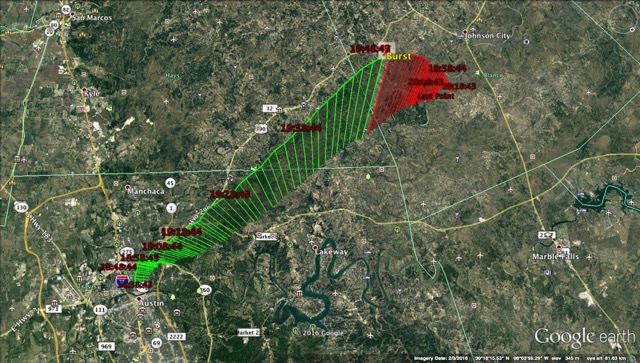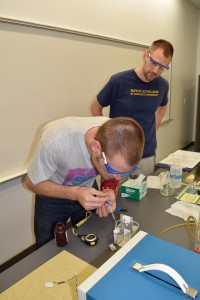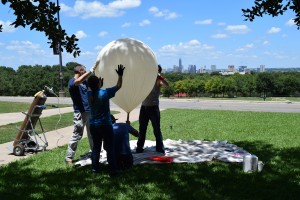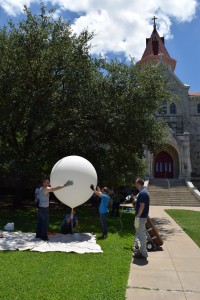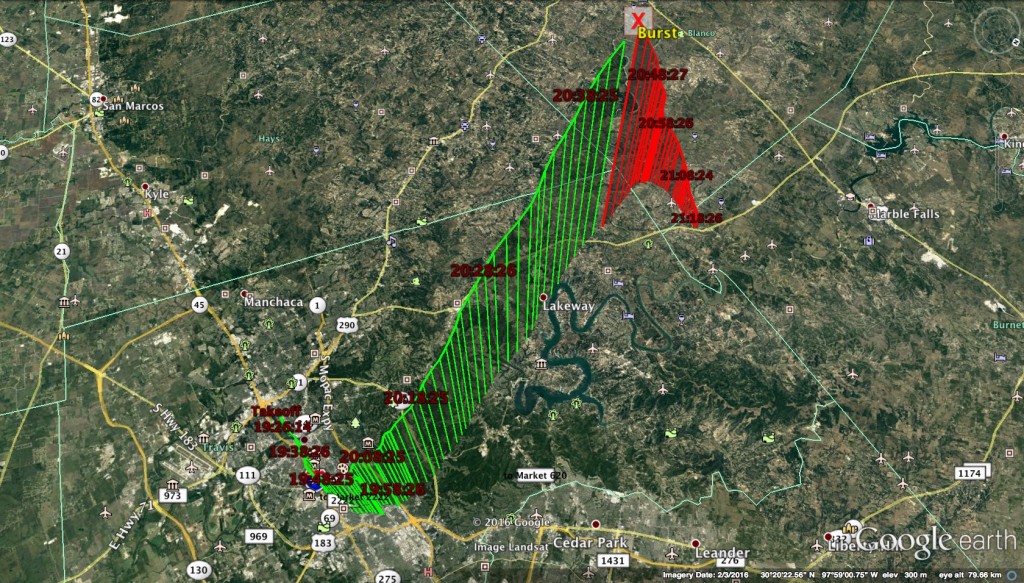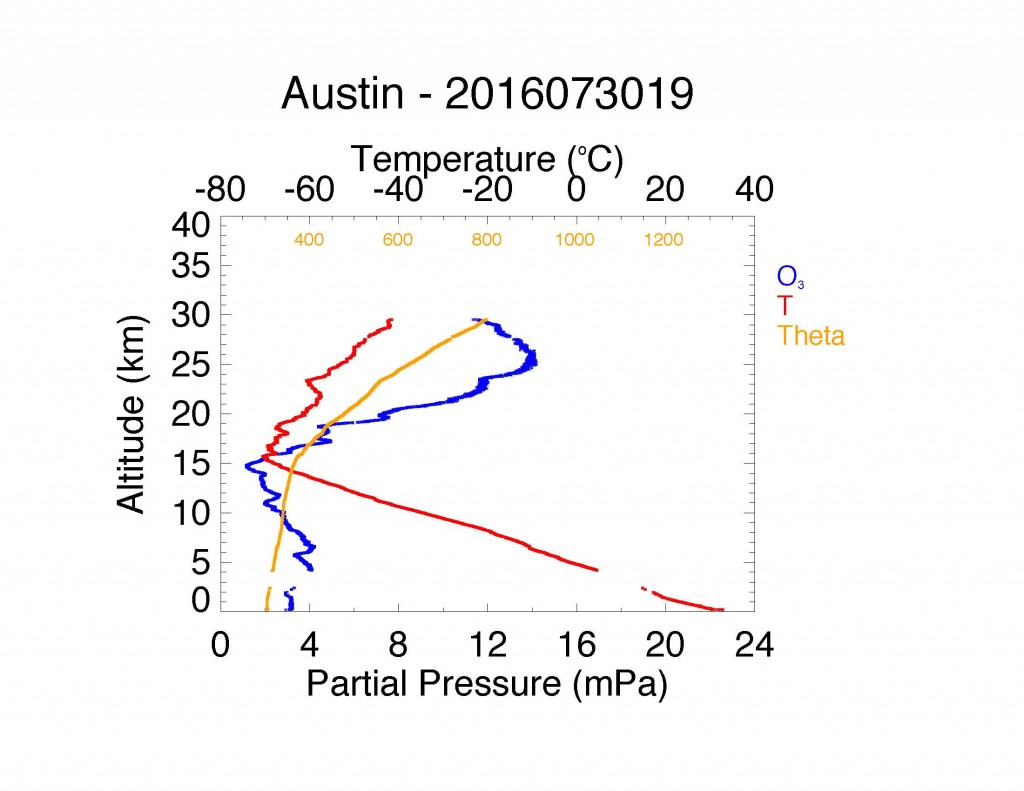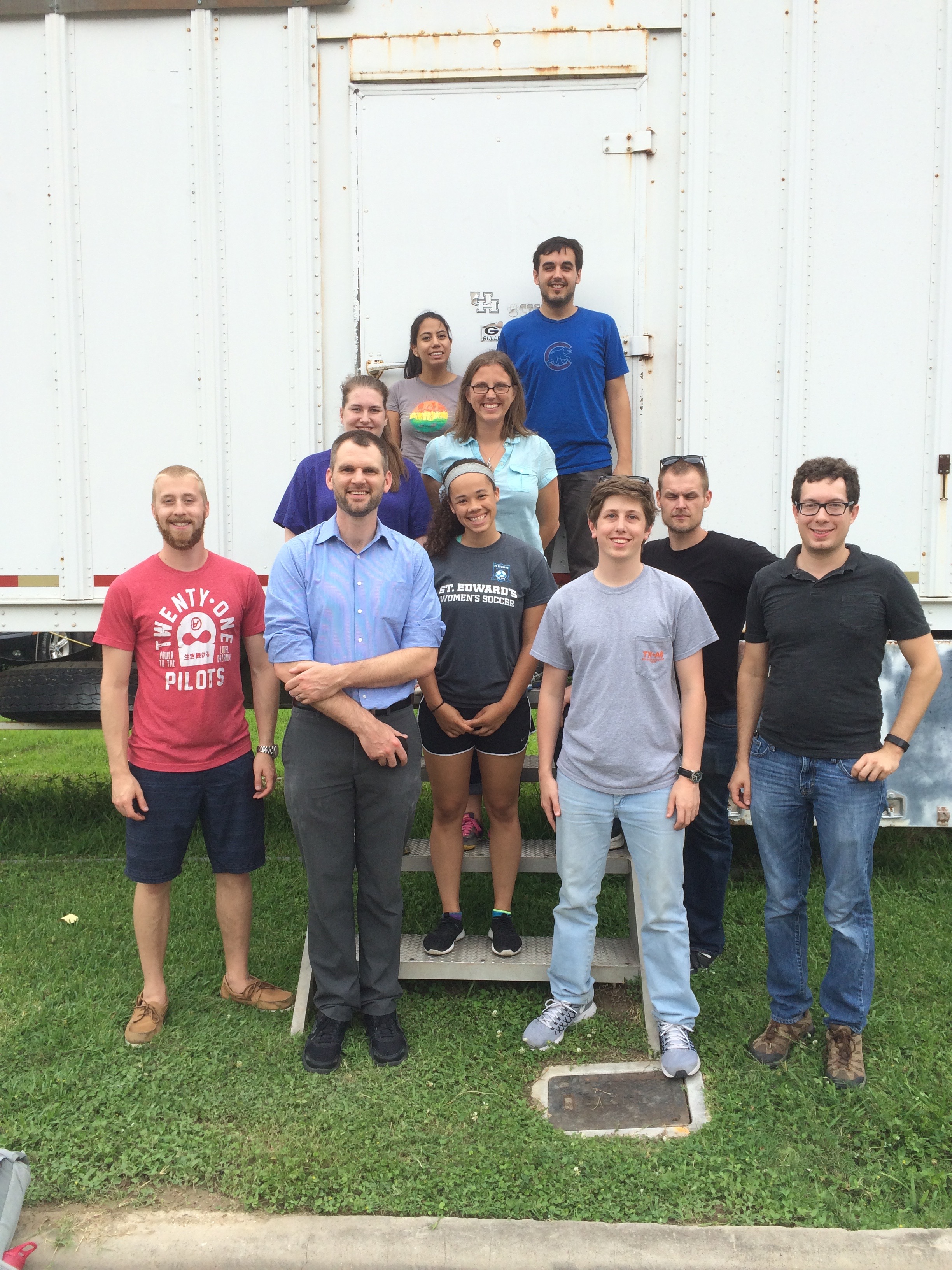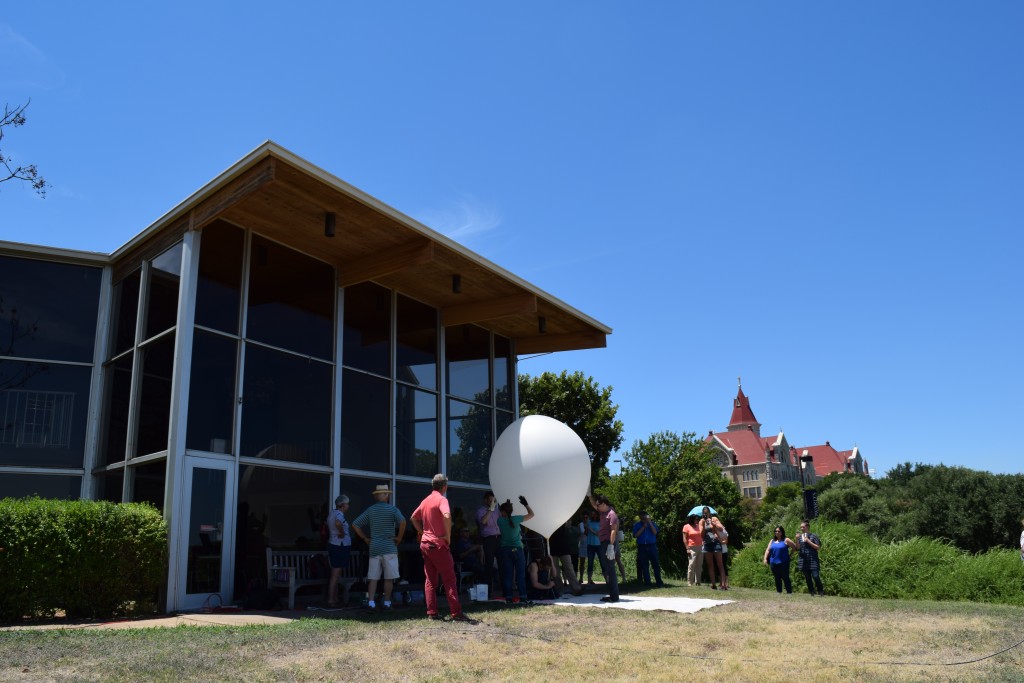
Weather balloon inflated with helium in front of the Mary Moody Northen Theatre at St. Edward’s University prior to its release around 1:30 pm CDT on Thurs., 4 Aug. 2016.
A dozen Austin area STEM middle and high schools teachers participated in the second weather balloon launch from St. Edward’s University on Thursday, 4 August.
The teachers were attending a workshop entitled, “Air Quality in Austin,” as part of the larger Austin Area STEM Teachers Conference, hosted at St. Edward’s University 2 – 5 August.
The air quality workshop is sponsored by a grant from 3M, while the data are provided courtesy the Tropospheric Ozone Pollution Project (TOPP), which has been funded by TCEQ, NASA, Fulbright, and the Shell Center for Sustainability at Rice University. Our current project at St. Edward’s University is funded by the Capital Area Council of Governments (CAPCOG).
Dr. Steven Fletcher (Assoc. Prof. of Education), Dr. Bill Quinn (Prof. of Biological Sciences), Dr. Paul Walter (Visiting Asst. Prof. of Physics), Ms. Ashley Moreno (undergraduate student), and Dr. Gary A. Morris (Dean of Natural Sciences and Prof. of Physics) led the workshop at St. Edward’s University.
As part of the workshop, attendees participated in a weather balloon launch around 1:30 pm in front of the Mary Moody Northen Theatre at St. Edward’s. Another glorious day made for good viewing as the balloon ascended on its journey through the ozone layer to an altitude of 28 km before bursting and descending back to Earth, landing somewhere near Northeast of Johnson City, Texas around 3:30 pm.
You can eventually find all of our project data on the St. Edward’s University Institutional Repository. A few plots from today’s flight are below.

Ozone (blue), temperature (red), and potential temperature (orange) data from the weather balloon flight of 4 August 2016.


